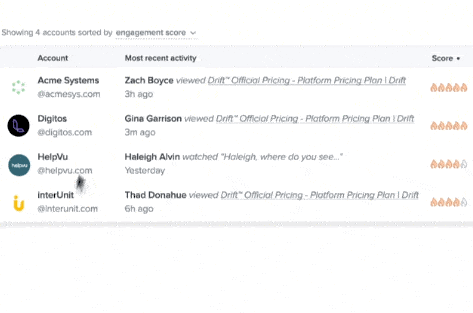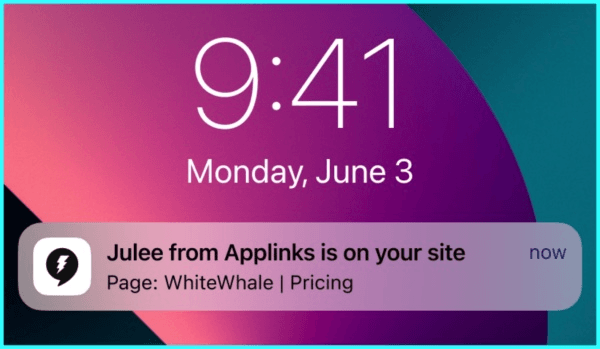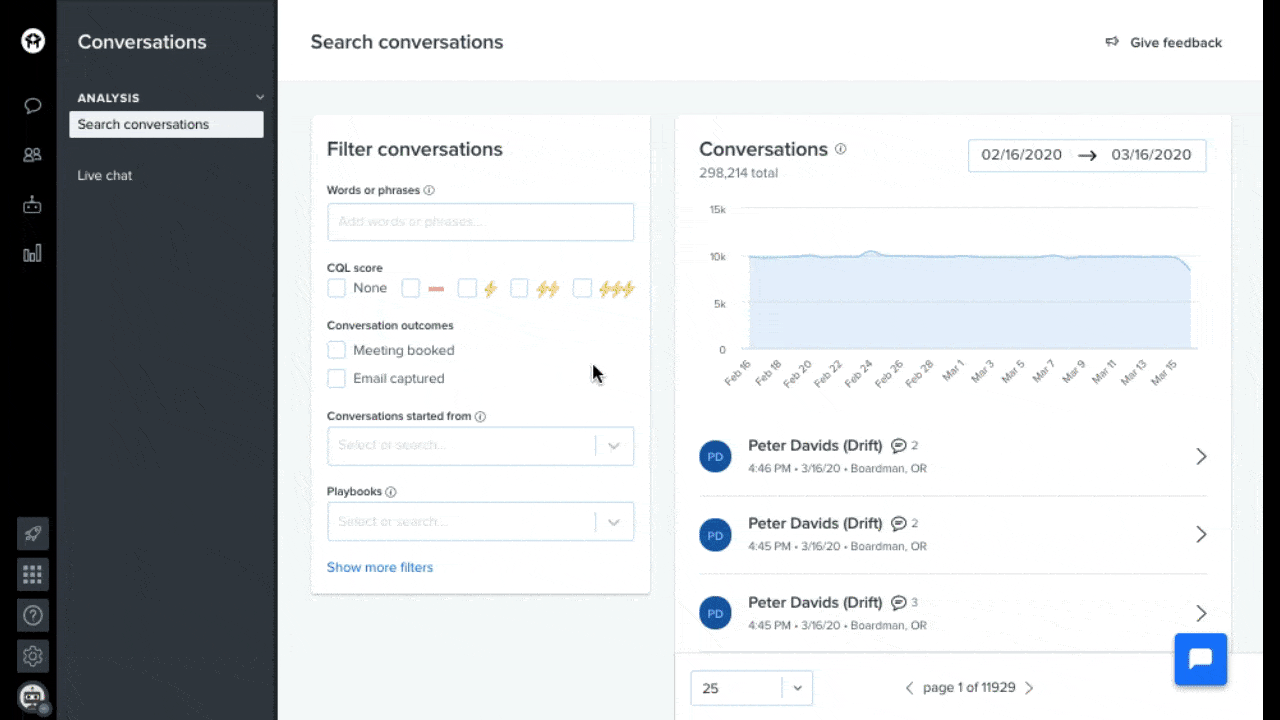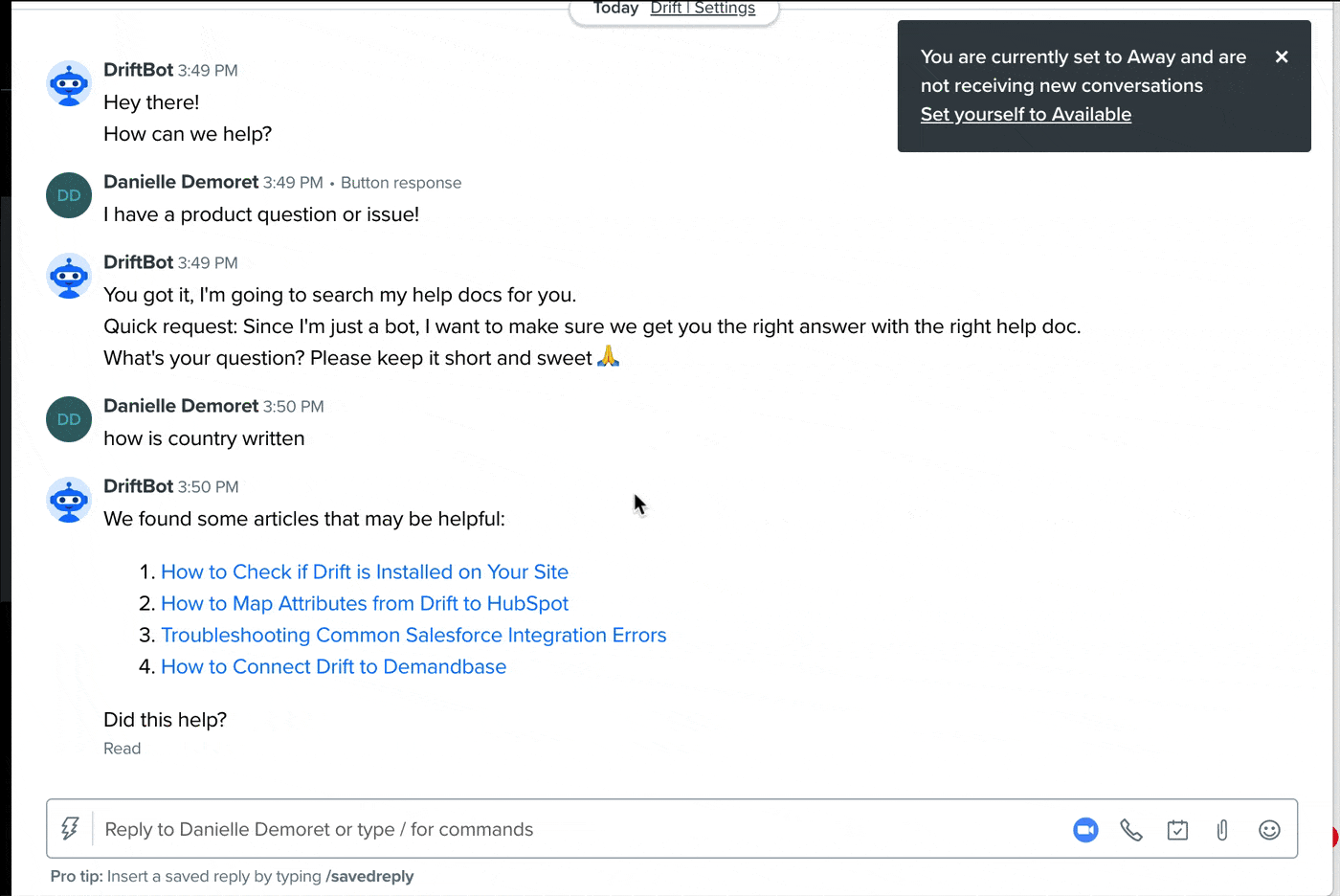Outbound smarter by prioritizing your high intent accounts and increasing response rates starting the right conversation in the right place with the right message.
Outbound sales is a tried and true method of selling.
Sellers started door to door, then turned to the phones, then to email. Selling continues to evolve and change, and with that, so do the channels we sell through — and who holds the power during the buying process.
Sellers used to have all of the power. Buyers could only learn more about a product or service with the help of a rep. But today, buyers can (and are) doing their own research throughout the buying journey.
87% of buyers say they would prefer to self-serve part or all of their buying journey. And with close to 8,000 tech solutions out there, they have a lot of options. That means for sellers, every moment and every conversation counts when it comes to proving the value of your solution.
Today, outbound sales has to be intentional. No more generic emails or cold calls read from a script.
You may be thinking that this sounds time-consuming. But with a buyer-centric mindset and the right tools to give you actionable insights, you’ll be celebrating wins in no time.
Here are three steps to help you more effectively outbound to your prospects.
Earlier, we reviewed how to use Prospector to prioritize your accounts so you can sell more efficiently.
Now that you’ve uncovered how to prioritize your day, it’s time to send the right messaging through the right channel based on buyer signals.
We know tab switching and going from tool to tool doesn’t help with productivity, so we built integrations with your existing sales tools like Salesloft and Outreach.
“We partnered with Drift to drive a more hyper-relevant buyer experience and help sales and marketing professionals create meaningful, perfectly-timed connections with prospects while eliminating cold outbound activities.”

—Whitney Moore, Manager of Inbound Sales Development, Salesloft
So, how does it work?
Right from chat or Prospector, sales reps can enroll contacts into a Salesloft or Outreach cadence, email a contact, or connect with them on LinkedIn.
You can learn more about how to connect Outreach with Drift here and Salesloft here.
Here are a few examples of how you can turn buyer insights from Drift into outbound motions with the tools you already use to sell:
1. Prospector to LinkedIn Message
When you wake up and start your work day, you check Drift Prospector.
You see that Whitewhale, one of your top accounts, has a “5” engagement score, meaning they are extremely engaged.
When you click into Whitewhale and view the contact activity, you see that Tom Jones, a VP from one of your top target accounts, was browsing a product page.
Right from Prospector, you can click on the LinkedIn icon, which will take you directly to the contact’s profile.
You can then quickly send a Drift Video to your prospect, walking them through that product deeper and giving them the information they need. You’ll get a notification while Tom watches that video, giving you the opportunity to jump in and book a meeting. Learn more about how to use Drift Video in step two.

2. Outreach Message to Target Account Conversation
You spend a lot of time crafting emails to use for your outbound activities.
The goal of spending this thoughtful time crafting your Outreach sequence is to elicit some sort of action from your buyer. The best case scenario is an email right back saying let’s book a demo. But we know not all buyers are ready for a demo and that buyers today do a lot of research on their own before talking to a buyer.
So, how can you continue the conversation if a buyer clicks a link in a sequence and visits your website? Be there with a personalized message.

When a prospect clicks any link to your website in your Outreach sequence, they’ll be greeted by you, their account manager, with a personalized Drift message on your website.
You will be notified the second they land on your site so you can jump straight into a conversation. And if you’re not around, the bot has you covered. It will start a conversation and help them book a meeting with you for later.
3. Prospector to Salesloft Sequence
Drift Prospector helps you identify the buying committee within an account.
If you uncover a new contact, keep the conversation going by enrolling them in a Salesloft sequence – without having to switch over to a different sales tool.

Sellers can also see Drift events in the Salesloft feed and see who’s watching your videos and visiting the website when you send them links via Salesloft.
Step 2: Increase Response Rate with Video
We don’t mean to belabor the point, but it’s harder than ever to get (and keep) a buyer’s attention.
Between competitors and a crowded market — inboxes are noisier than ever. It’s important to stand out, not just with your messaging, but also by showing that you are a trusted advisor.
Recording a Drift Video is an authentic way to connect with a prospective buyer and can help you stand out from all the other messages in their inbox.
Using Drift Video, you can engage prospects and customers with quick, personalized videos and GIFs allowing you to start more conversations, shorten sales cycles, and engage more of the buying committee.

It’s an efficient way to make a really personal connection. With the Drift Video Chrome extension, you can record right from Google Chrome.
The extension also has integrations with popular platforms like Gmail, Zoom, LinkedIn, Outreach, and more so you can quickly record videos through your selling channels.
Click here to download the extension from the Chrome Web Store, then click Add to Chrome.
“With Drift Video, our reply rates moved from 3-4% to 10-12%, with half of the replies being generated by videos. Adding this level of personalization dramatically increased the quality of conversations we began to have with our prospects. And on top of that, we managed to double the conversion rate from MQL to SQL. Now our whole sales team in France, the UK, and the U.S. are using Drift Video.”

—Pierre Touzeau, VP of Marketing, 360Learning
There are many ways you can use Drift Video to engage buyers in your outbound sales efforts. Below are some of our favorites:
1. The Attention Grabber
Sending faceless, robotic emails isn’t going to get you far. Instead of introducing yourself with a standard cold email, find something your prospect cares about and connect with them on that.
The point here is to establish credibility. Lead the conversation with how you’ll help them.

2. The GIF Play
We’ve mentioned this a few times before, but it bears repeating. Standing out is the name of the game.
Add a creative and personal touch to your emails by creating a personalized GIF (you can do this with Drift Video), calling out your buyer’s name, and showing your face.

3. The Meeting Recap
Your outbound efforts have finally paid off. You booked and held a meeting with a buyer.
That’s awesome. Now it’s time to double down.
A great way to continue your trusted advisor relationship is to send a Drift Video with a recap of that meeting. Include any important information so your prospect can go back and view it later on.

4. Continue the Conversation
Once you send a video, it’s all about keeping the conversation going. Drift Video will instantly notify you on desktop and mobile if someone engages with one of your videos.
You can then jump in to chat in real-time and chat with your buyer while they watch the video.

If you aren’t around or miss a notification, we have you covered. Buyers can instantly book time with you through the bot.
Step 3: Sell on the Go
Just because you aren’t in front of your computer doesn’t mean outbound sales has to stop.
And it certainly doesn’t mean you have to miss out on starting a conversation with your top account.
Sellers are always trying to earn the right to start and continue a conversation. So when your dream account comes to the site, has high intent, and is ready to chat, you can still be there with the right message using the Drift Mobile App.
The Drift Mobile App helps sellers engage with their prospects anytime and anywhere.
You can quickly create a video right from in the app, manage your inbox, chat on the go, and collaborate with your team.

































